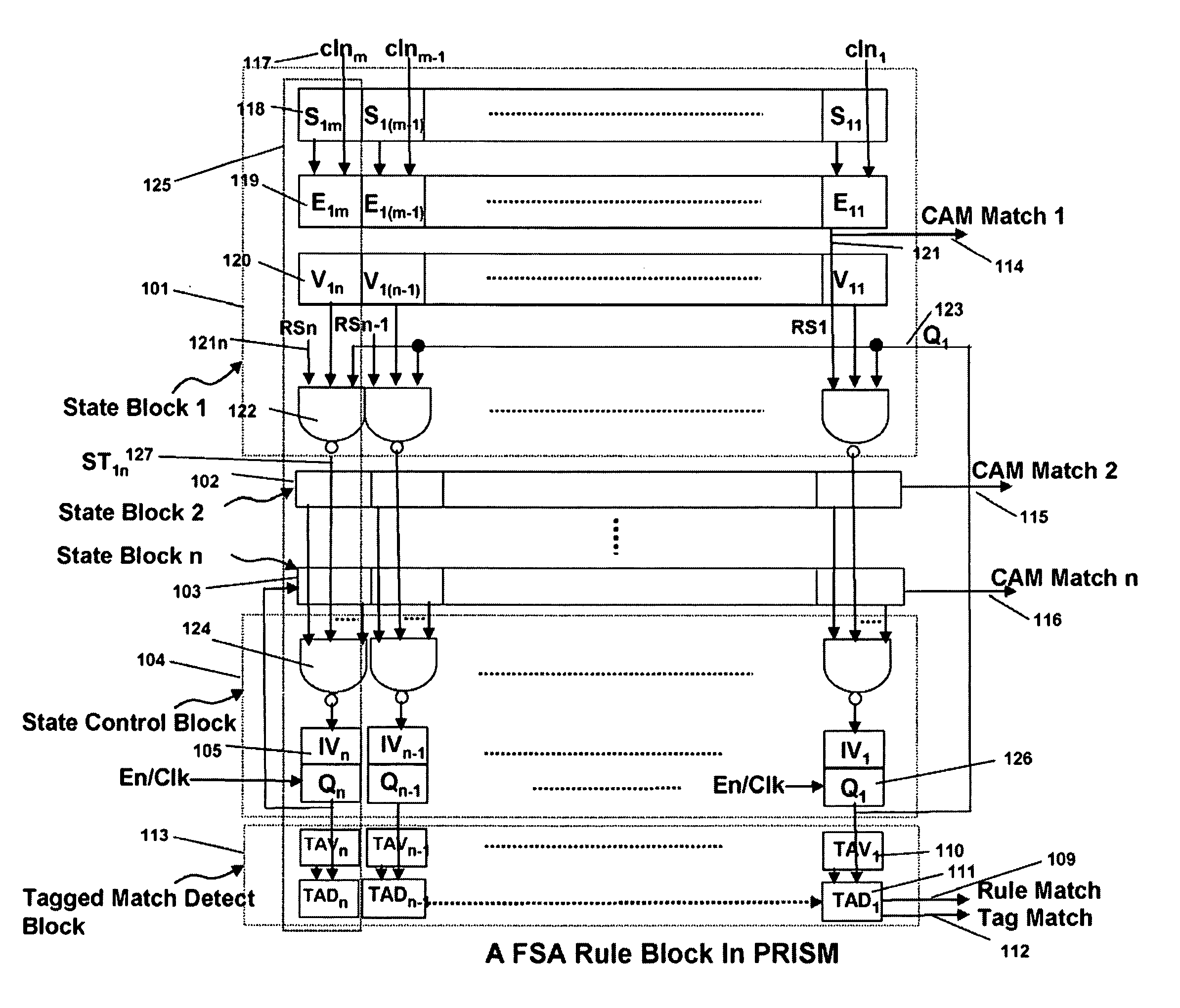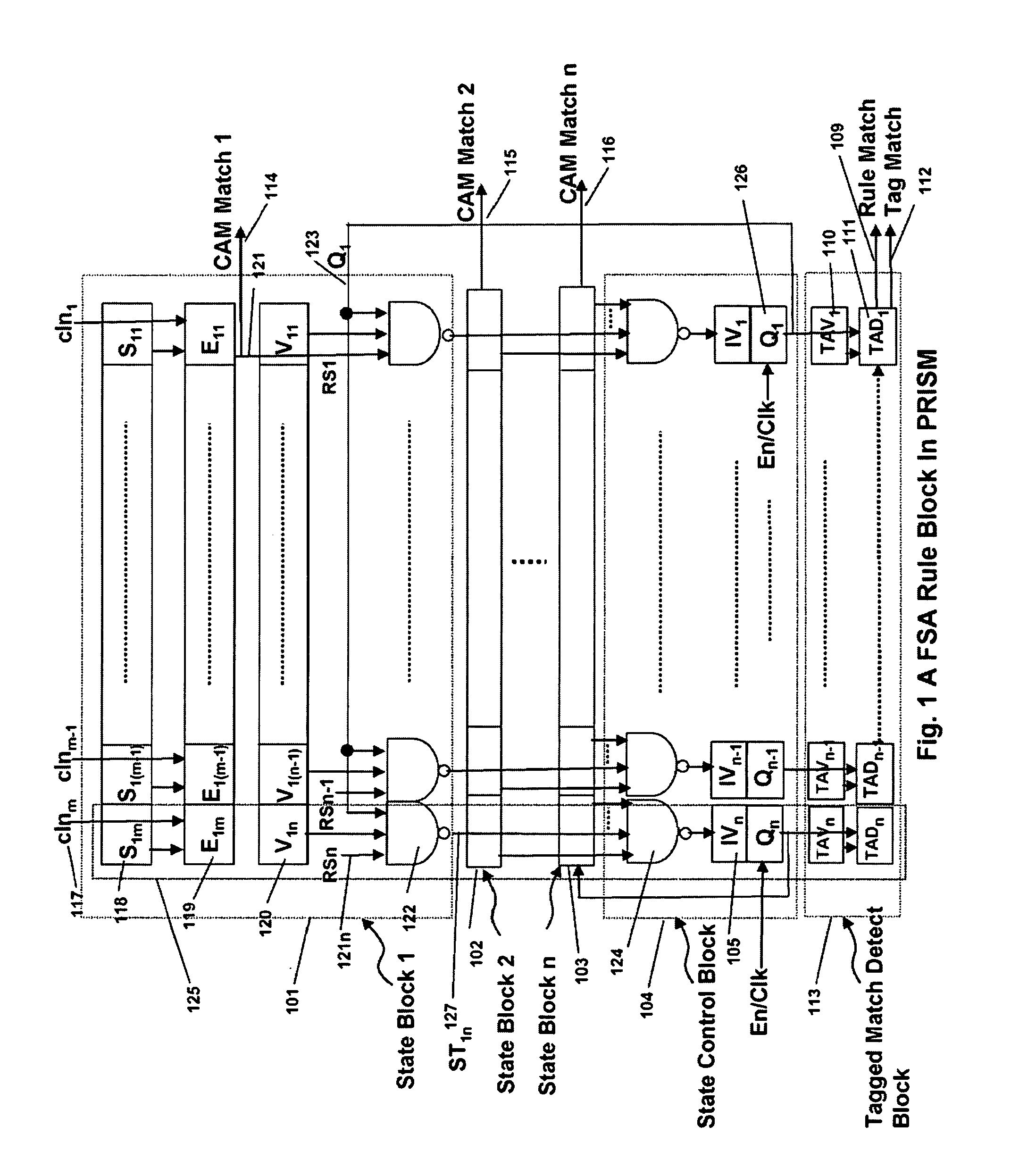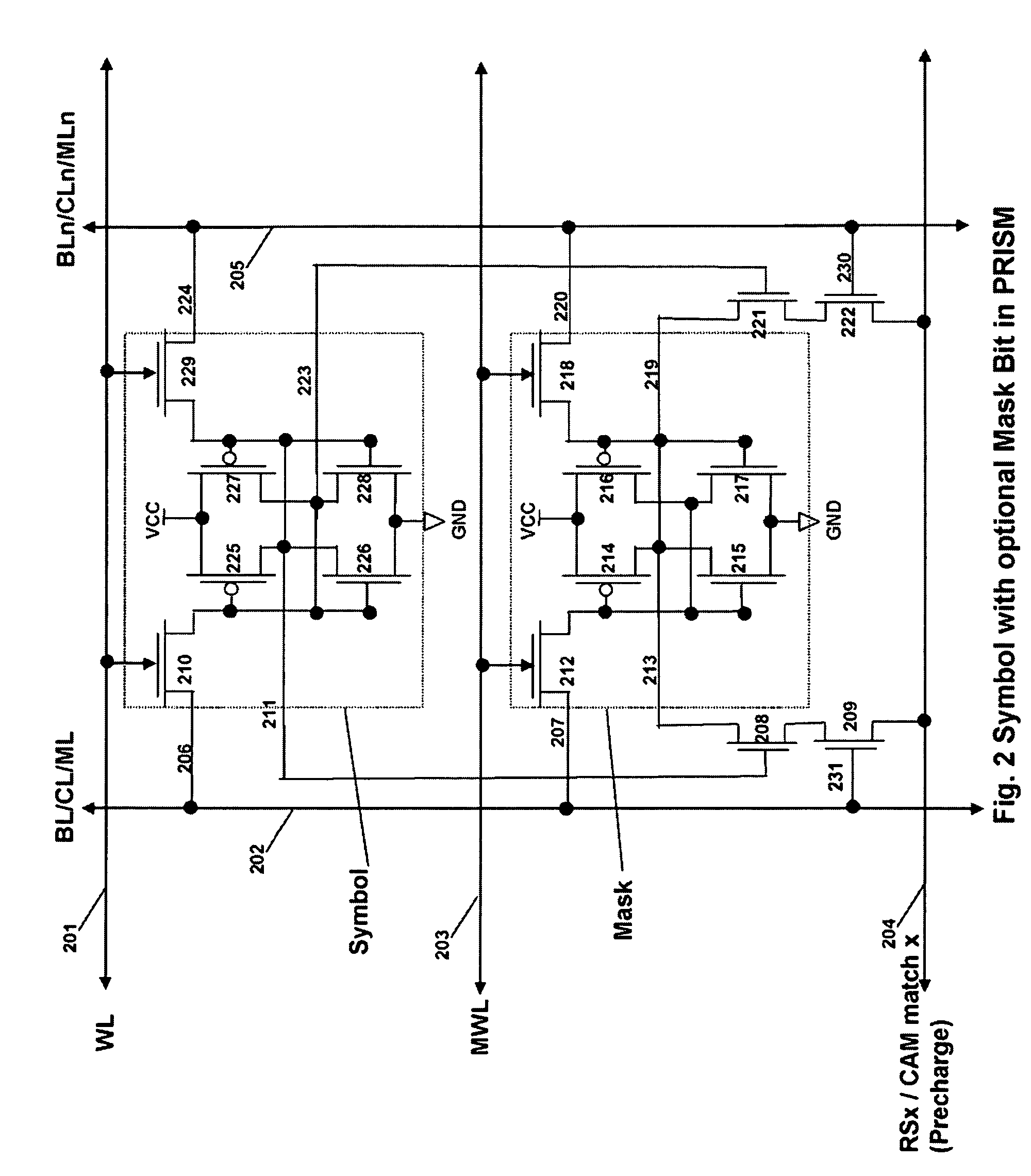Complex Symbol Evaluation for Programmable Intelligent Search Memory
a search memory and complex symbol technology, applied in the field of memory technology, can solve the problems of significant performance and storage limitations of each type of representation, and achieve the effect of efficient and compact realization
- Summary
- Abstract
- Description
- Claims
- Application Information
AI Technical Summary
Benefits of technology
Problems solved by technology
Method used
Image
Examples
Embodiment Construction
[0033]I describe complex symbol evaluation for a high performance Programmable Intelligent Search Memory for searching content with regular expressions as well as other pattern searches. The regular expressions may optionally be tagged to detect sub expression matches beside the full regular expression match. The regular expressions are converted into equivalent FSAs or NFAs and optionally into tagged NFAs. The PRISM memory also optionally supports ternary content addressable memory functionality. So fixed string searches may optionally be programmed into the PRISM memory of my invention. PRISM memory of this invention enables a very efficient and compact realization of intelligent content search using FSA to meet the needs of current and emerging content search applications. The description here is with respect to one preferred embodiment of this invention in an integrated circuit (IC) chip, however it will be appreciated by those with ordinary skill in the art that changes in thes...
PUM
 Login to View More
Login to View More Abstract
Description
Claims
Application Information
 Login to View More
Login to View More - R&D
- Intellectual Property
- Life Sciences
- Materials
- Tech Scout
- Unparalleled Data Quality
- Higher Quality Content
- 60% Fewer Hallucinations
Browse by: Latest US Patents, China's latest patents, Technical Efficacy Thesaurus, Application Domain, Technology Topic, Popular Technical Reports.
© 2025 PatSnap. All rights reserved.Legal|Privacy policy|Modern Slavery Act Transparency Statement|Sitemap|About US| Contact US: help@patsnap.com



